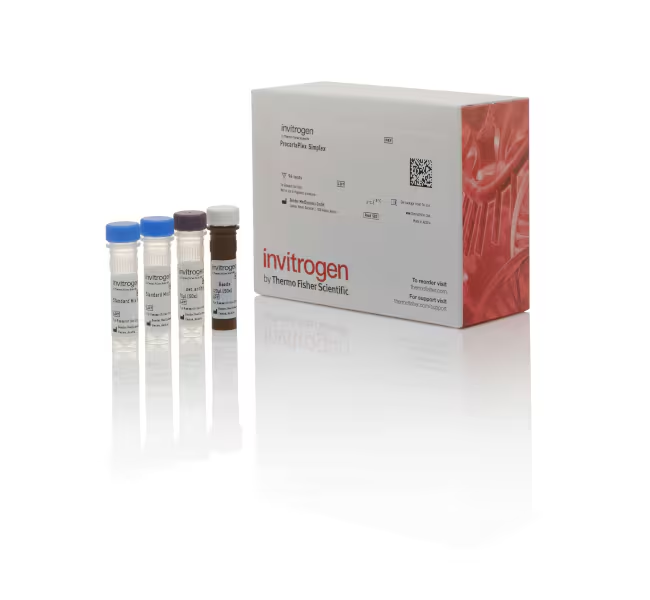
The Human IL-17A (CTLA-8) High Sensitivity Simplex ProcartaPlex Kit measures IL-17A (CTLA-8) protein and is designed to be combinable with other High Sensitivity Simplex kits so that you can create your own multiplex panel that utilizes Luminex xMAP technology for protein detection/quantitation. When combining multiple Simplex kits (i.e., when you are not using a pre-configured Multiplex Panel), only one buffer kit (sold separately) is needed for each assay plate regardless of plex size.
The ProcartaPlex high-sensitivity immunoassays enable the multiplexed analysis of human and mouse analytes in very low concentrations in various matrices, including serum, plasma, bodily fluids, and cell culture supernatant samples. These high-sensitivity multiplex assays are ideal when sample input is limited, and protein expression is in the low pg/mL range.
ProcartaPlex immunoassays are based on the principles of a sandwich ELISA, using two highly specific antibodies binding to different epitopes of one protein to quantitate up to 80 protein targets simultaneously when using the FLEXMAP 3D or Luminex 200 instrument and up to 50 protein targets when using the MAGPIX instrument. ProcartaPlex assays require as little as 25 μL of plasma or serum, or 50 μL of cell culture supernatant, and just four hours to obtain analyzed results.
• More results per sample—measure up to 80 protein targets in a single 25–50 μL sample
• Well-established Luminex technology—the most referenced multiplexing platform for protein detection and quantitation
The Luminex MagPlex superparamagnetic microsphere beads in the ProcartaPlex assay are internally dyed with precise proportions of red and infrared fluorophores to create 100 spectrally unique signatures that can be identified by the Luminex xMAP detection systems (Luminex 200, FLEXMAP 3D, and MAGPIX systems). Similar to a sandwich ELISA, the ProcartaPlex assay uses matched antibody pairs to identify the protein of interest. In a ProcartaPlex multiplex assay, each spectrally unique bead is labeled with antibodies specific for a single target protein, and bound proteins are identified with biotinylated antibodies and streptavidin–R-phycoerythrin (RPE). The conjugation of protein-specific antibodies to a distinct bead allows for analysis of multiple targets in a single well.
The most significant difference between a ProcartaPlex assay and ELISA is that the capture antibody in the ProcartaPlex assay is conjugated to a magnetic bead and not adsorbed to the microplate well, so the ProcartaPlex assay reagents are free-floating in the solution. For detection, the Luminex 200 instrument, for example, contains two lasers, one to distinguish the spectral signature of each bead and the second to quantify the amount of RPE fluorescence, which is proportional to the amount of protein present in the sample. ProcartaPlex multiplex assays can profile up to 80 times more target proteins using significantly less sample in the same time that it takes to perform a traditional sandwich ELISA.
ProcartaPlex Simplex kits provide the ability to create your own unique panel . More than 90% of ProcartaPlex Simplex targets can be combined, providing you with superior flexibility when creating your own multiplex panel.
ProcartaPlex Simplex kits are available across six species (human, mouse, rat, nonhuman primate, porcine, and canine). Visit thermofisher.com/procartaplex for more information, including a comprehensive list of individual protein targets.
| Code | Description |
|---|---|
| EPXS010-12017-901 | Catalog Number: EPXS010-12017-901 |

